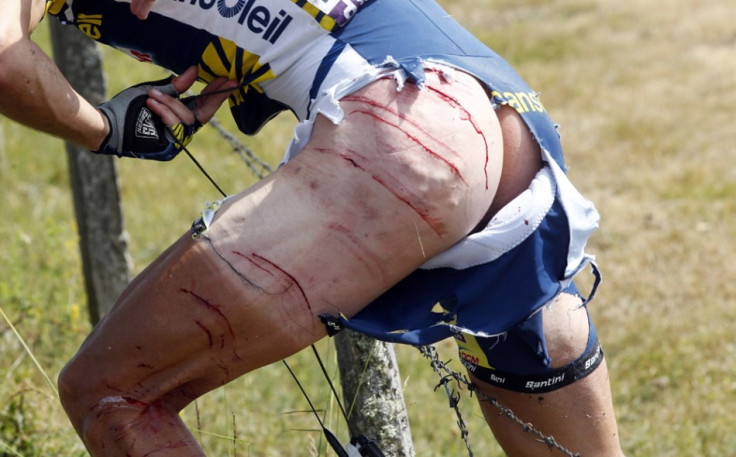Spanish cyclist shows off incredible photo of veiny legs after Tour of Spain
The annual tour primarily held in Spain is taking place from October to November this year due to the COVID-19 pandemic.
Last week, professional cyclist Jose Joaquin Rojas posted a picture of his hulking thighs riddled with veins after a stage of the Vuelta a España. In the caption, he pointed out that the monstrous appearance of his thighs is the after-effect of non-stop cycling. For the past few years, he has been sharing similar images of his legs after participating in the tour.
Rojas showed off his legs in a picture that he shared on Instagram. The 35-year-old cyclist from Murcia, Spain, took the picture after competing in seven stages of the competition. He said that he is prepared to take on the eighth stage, where he is expected to cycle for another four hours non-stop.
Impactante foto de las piernas de un ciclista después de disputar siete etapas en la Vuelta a España
— Alejo (@alejogaliasso) October 29, 2020
El español José JoaquÃn Rojas compartió una increÃble imagen en sus redes sociales donde se refleja la extrema dureza de esta competencia
Que opinan? pic.twitter.com/elPtCUyslX
His thighs are being compared to those of German cyclist Robert Forstemann, who notably had some of the biggest thighs in the sport. The 33-year-old Olympian also shares images of his gargantuan thighs on social media. He rose to prominence after securing the Bronze medal in the Team Sprint cycling event at the 2012 London Olympics.
How the hell does Robert Forstemann get trousers to fit??? pic.twitter.com/VQ1XgDHe75
— Mike Hayward (@MikeBorntoBike) August 21, 2015
In the post, fellow cyclist, Andrey Amador commented: "Don't attack us, ok!" The cyclist's efforts were appreciated by his fans. However, one keen-eyed follower commented that he has been sharing the same image for the past three years. Rojas pointed out that every year, he has different coloured socks to show that the image is a recent one.
After Tour de France, people often question the reason behind the cyclists having prominent veins riddling their legs. Bicycling.com addressed the question. With the help of Debabrata Mukherjee, chair of the department of internal medicine and chief of cardiovascular medicine at Texas Tech University Health Sciences Center in El Paso, they were able to explain the phenomenon. The doctor wrote that the cyclist's low body fat in combination with high blood flow to the legs made the veins prominent.
Body fat creates layers of covering over our veins. Due to the low body fat in the legs of cyclists, the veins become prominent against their skin as the blood flow engorges them.
This year's Vuelta a España has been a gruelling tour due to the COVID-19 restrictions. The event was pushed back from the August-September schedule to October 20 to November 8. According to Cycling Weekly, the 21 stage event was also reduced to 18 stages.

© Copyright IBTimes 2025. All rights reserved.





















